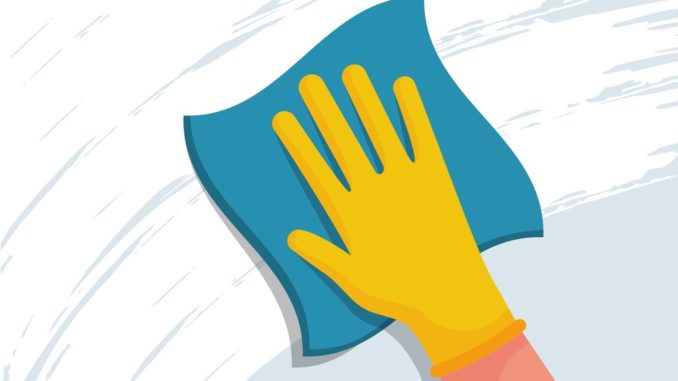
It has never been more important to keep your school clean – but with so much information out there about cleanliness to keep COVID at bay, what are the facts you need to know?
By now we are all used to washing our hands more regularly, cleaning surfaces more thoroughly and carrying hand sanitiser wherever we go, but with so much information out there about the best ways to minimise the risk of COVID, and an abudance of products claiming to be the best, it can be hard to know what is fact and what is not.
It is imperative that both staff and pupils feel safe when they are in school, and if they feel that the school is as clean as possible then this will help to settle many of their worries. So, how can you be sure that the products you are using, and the cleaning practices you are implementing, are succesfully doing the job they should be doing?
What products should you use?
As with cleaning your hands, soap and water are actually some of the most effective options for cleaning surfaces, as Dr Primrose Freestone, associate professor in clinical microbiology at the University of Leicester explains. “COVID-19 is an enveloped RNA (ribonucleic acid) virus, meaning that proteins and lipids are part of its structure. Therefore, detergents by themselves – such as soap and even washing-up liquid – work very well at disrupting the virus structure by dissolving the lipids which, in turn, inactivates the virus by stopping it binding to our cells.” The at least 60% alcohol in hand sanitisers works in a similar way, dissolving lipids in the virus coating.
You should first clean hard surfaces with warm, soapy water and then disinfect them. For disinfection, diluted household bleach solutions (hydrogen peroxide or sodium hypochlorite), alcohol solutions with at least 70% alcohol, and certain anti-viral household disinfectants should be effective.
You don’t need to spend extra money on specialised disinfectant products; Dr Freestone says that regular detergent and diluted bleach are fine for combating COVID-19. If you are buying disinfectant, check the product information to make sure it says it combats viruses including influenza and human coronaviruses.
How should you clean?
Regular cleaning plays a vital role in limiting the transmission of COVID-19; reducing clutter and removing difficult to clean items can also make cleaning easier. Increase the frequency of cleaning, using standard cleaning products such as detergents and bleach, paying attention to all surfaces but especially those that are touched frequently, such as door handles, light switches, work surfaces and electronic devices.
As a minimum, frequently touched surfaces should be wiped down twice a day; one of these should be at the beginning or the end of the school day. Cleaning should be more frequent depending on the number of people using the space, whether they are entering and exiting the setting, and access to handwashing and hand-sanitising facilities. Cleaning of frequently touched surfaces is particularly important in bathrooms and communal kitchens.
When cleaning surfaces, it is not necessary to wear personal protective equipment (PPE) or clothing over and above what would usually be used. Use disposable cloths, or paper roll and disposable mop heads, to clean all hard surfaces, floors, chairs, door handles and sanitary fittings – think ‘One site, one wipe, in one direction’.
Use one of the cleaning options below:
- a combined detergent disinfectant solution at a dilution of 1,000 parts per million available chlorine (ppm av.cl.);
- a household detergent followed by disinfection (1000 ppm av.cl.). Follow manufacturer’s instructions for dilution, application and contact times for all detergents and disinfectants;
- if an alternative disinfectant is used within the organisation ensure that it is effective against enveloped viruses.
It is best to avoid mixing cleaning products together as this can create toxic fumes. Making sure you avoid creating splashes and spray when cleaning is important to keep contamination to a minimum. Any cloths and mop heads used must be disposed of and should be put into waste bags as outlined here.
Following these guidelines should ensure you keep your school as COVID-secure as possible. Cleaning frequently, focusing on the most-touched surfaces, and using the correct cleaning products will help to stop the transmission of COVID.



Be the first to comment